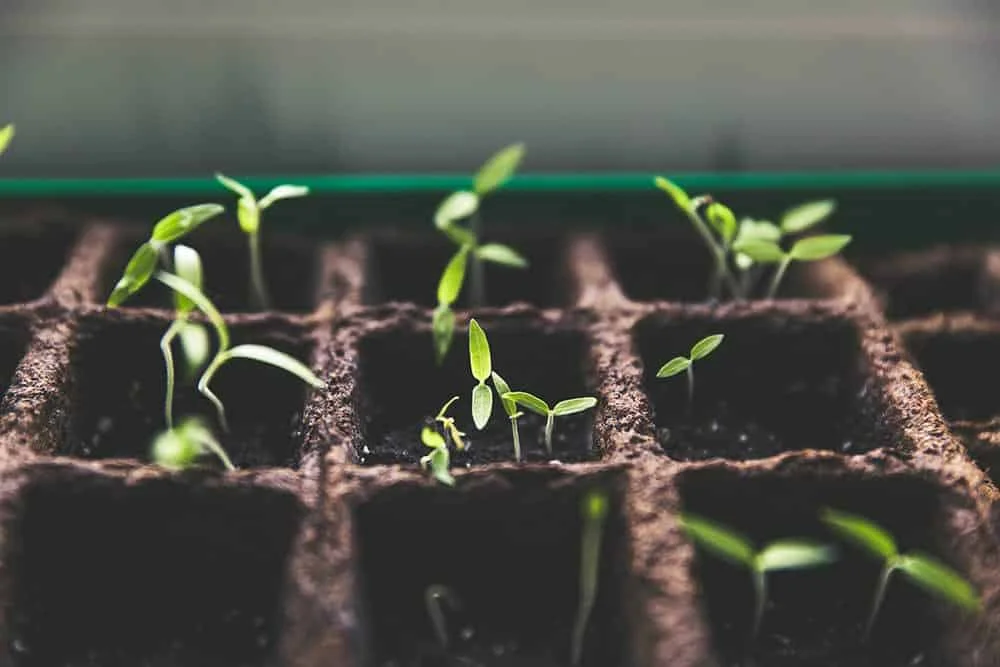
Germination is the crucial starting point for any successful cannabis cultivation endeavour. Understanding the importance of this initial stage sets the foundation for healthy plant growth and robust yields. In the vast landscape of cannabis cultivation, germination marks the transition from seed to seedling, laying the groundwork for the entire growth cycle. Without proper germination, even the best genetics and care efforts can falter.
In this comprehensive guide, we delve into the intricate process of germinating cannabis seeds, outlining step-by-step procedures and best practices to ensure optimal results. From selecting the finest seeds to nurturing delicate seedlings, each stage of germination is meticulously explored. Whether you’re a novice grower or a seasoned cultivator, mastering the art of germination is fundamental to unlocking the full potential of your cannabis crop.
Throughout this article, we’ll provide valuable insights into creating the ideal germination environment, choosing suitable germination methods, and troubleshooting common issues that may arise along the way. By the end, you’ll possess the knowledge and confidence to embark on your cannabis growing journey with precision and expertise. Join us as we unravel the mysteries of cannabis germination and empower you to cultivate thriving plants from the very beginning.
Germination is the transformative process by which a dormant cannabis seed transitions into a viable seedling, poised for growth and development. At its core, germination is the awakening of life within the seed, triggered by the right combination of moisture, warmth, and oxygen. This critical stage sets the trajectory for the entire cultivation journey, influencing plant health, vigour, and ultimately, yield.
Several factors play pivotal roles in determining the success of cannabis germination. Genetics, for instance, dictate the inherent characteristics of the seeds, including their viability and resilience. Opting for reputable seed banks and selecting strains known for robust germination rates can significantly enhance your chances of success. Additionally, environmental conditions wield considerable influence over germination outcomes. Factors such as temperature, humidity, and light intensity must be carefully calibrated to create an optimal germination environment. Ensuring adequate moisture levels without suffocating the seeds is crucial for facilitating the germination process.

The stages of germination unfold in a sequence of events that mark the transition from seed to seedling. The first stage, activation, occurs when the seed absorbs water, initiating metabolic processes within its dormant embryo. This triggers the emergence of the primary root, a crucial appendage that anchors the seedling and absorbs water and nutrients from the surrounding medium. As the root system establishes itself, the seedling embarks on the journey of development, unfurling cotyledons and true leaves, and harnessing photosynthesis to fuel its growth. Understanding these stages empowers cultivators to anticipate and respond to the needs of their germinating seeds, fostering optimal conditions for healthy seedling development.
In grasping the intricacies of cannabis germination, cultivators gain insight into the foundational principles of successful cultivation. By acknowledging the interplay of genetics, environment, and developmental stages, growers can cultivate robust seedlings that serve as the bedrock for bountiful harvests. Armed with this knowledge, cultivators are poised to embark on their germination journey with confidence and precision, setting the stage for a flourishing cannabis crop.
Before embarking on the journey of cannabis germination, it’s essential to lay the groundwork for success. This involves meticulous preparation, beginning with the selection of high-quality cannabis seeds. Opting for seeds from reputable breeders or seed banks ensures genetic integrity and reliability, increasing the likelihood of successful germination. Look for seeds with intact outer shells, indicating viability, and avoid seeds that appear damaged or immature.
Equally crucial is assembling the necessary supplies and equipment for the germination process. Basic items such as sterile containers, distilled water, and paper towels are essential for most germination methods. Depending on your chosen approach, additional tools such as germination cubes or plugs may be beneficial. Investing in a reliable pH meter and thermometer allows for precise monitoring of environmental conditions, ensuring optimal germination outcomes.
Creating the optimal germination environment is paramount to fostering healthy seedling development. Temperature, humidity, and light considerations play pivotal roles in this regard. For most cannabis strains, maintaining a temperature range of 70-85°F (21-29°C) is ideal for germination, with slight variations tolerated depending on the strain’s preferences. Humidity levels should be kept relatively high, around 70-90%, to prevent desiccation of the seeds and promote moisture uptake. While light is not essential during the germination phase, providing indirect light or a low-intensity grow light can signal to the seeds that it’s time to sprout.
By meticulously selecting high-quality seeds, gathering the necessary supplies, and creating an optimal germination environment, cultivators set the stage for successful cannabis germination. These preparatory steps lay the foundation for robust seedling development, ensuring a strong start to the cultivation journey. With attention to detail and careful planning, growers can optimize their germination process and pave the way for a flourishing cannabis crop.
Germinating cannabis seeds offers cultivators various methods to kickstart the germination process, each with its unique advantages and procedures. The water germination method stands as one of the simplest and most widely used techniques. To employ this method, start by filling a glass or container with distilled water at room temperature. Place your selected seeds into the water, ensuring they are fully submerged. Allow the seeds to soak for approximately 12-24 hours, monitoring them periodically for signs of activation. Once the seeds have swollen and cracked open slightly, indicating successful hydration, transfer them to a germination medium to continue the process.
The paper towel method provides another popular approach to germinating cannabis seeds, offering greater visibility and control over the germination process. Begin by moistening a paper towel with distilled water until it’s damp but not dripping. Place the seeds evenly spaced on one half of the towel, then fold the other half over to cover them. Carefully transfer the towel to a sealable plastic bag or container, ensuring it remains moist throughout the germination period. Check the seeds daily, spritzing the towel with water as needed to maintain moisture levels. Once the seeds have developed taproots of sufficient length, transfer them to a germination medium for further growth.

For cultivators seeking convenience and consistency, germination cubes or plugs offer a hassle-free alternative to traditional germination methods. These pre-made mediums provide an optimal environment for seedling development, with ideal moisture retention and aeration properties. To use germination cubes or plugs, simply saturate them with distilled water until fully hydrated, then insert the seeds into the designated holes or slots. Place the cubes or plugs in a warm, dark location, monitoring them regularly for signs of germination. As the seedlings emerge and develop, transplant them into larger containers or growing systems to continue their growth journey.
By exploring these diverse germination methods and their associated procedures, cultivators can tailor their approach to suit their preferences and environment. Whether opting for the simplicity of the water germination method, the visibility of the paper towel method, or the convenience of germination cubes or plugs, the ultimate goal remains the same: to foster healthy seedling development and pave the way for a successful cannabis crop. With careful attention to detail and adherence to best practices, cultivators can maximize their germination success and set the stage for bountiful harvests.
As cultivators embark on the journey of cannabis germination, close monitoring of progress is essential to ensure optimal outcomes. Understanding the signs of successful germination serves as a cornerstone of this monitoring process. One of the primary indicators of successful germination is the emergence of a white taproot from the seed, signalling that the seed has activated and begun its growth journey. Additionally, seeds may exhibit subtle changes in appearance, such as swelling and cracking of the outer shell, indicating absorption of water and initiation of metabolic processes within the embryo. Vigilant observation of these signs allows growers to intervene promptly and provide necessary support to emerging seedlings.
Despite careful preparation and adherence to best practices, germination issues may arise, requiring prompt identification and resolution. Damping-off, a fungal disease characterized by the sudden collapse and death of seedlings, poses a significant threat during the early stages of germination. To mitigate this risk, ensure proper sanitation practices, including sterilization of equipment and growing medium, and maintain adequate airflow to discourage fungal growth. Slow germination, manifested by delayed emergence of seedlings or failure to develop taproots, may result from suboptimal environmental conditions or poor seed quality. Adjusting temperature, humidity, and moisture levels can help expedite germination and promote healthy seedling development.
Patience and observation are paramount virtues during the germination process, underscoring the importance of closely monitoring seedlings and responding to their evolving needs. While it may be tempting to intervene at the first sign of trouble, exercising restraint and allowing nature to take its course often yields the best results. Resist the urge to overwater or disturb germinating seeds unnecessarily, as this can disrupt delicate root development and hinder growth. Instead, maintain a watchful eye on your germinating seeds, making adjustments as needed to optimize environmental conditions and support healthy seedling development.
Vigilant monitoring of germination progress, coupled with proactive troubleshooting and a healthy dose of patience, is key to cultivating successful cannabis seedlings. By familiarizing themselves with the signs of successful germination, anticipating and addressing common issues, and embracing the virtues of patience and observation, cultivators can nurture robust seedlings and set the stage for a flourishing cannabis crop.
Knowing when to transplant seedlings from their germination medium to their permanent growing environment is crucial to ensuring their continued development and success. Typically, seedlings are ready for transplantation once they have developed a strong root system and have grown their first set of true leaves. At this stage, usually around 2-3 weeks after germination, seedlings have outgrown their initial containers and require more space and nutrients to thrive. For soil-based cultivation, transplanting is recommended when seedlings are around 2-3 inches tall and have established a healthy root system. In hydroponic systems, seedlings can be transplanted once they have developed a well-defined root mass, usually indicated by visible roots protruding from the germination medium.
Proper techniques for handling delicate seedlings during transplantation are essential to minimize stress and ensure their continued health and vigor. Begin by gently loosening the germination medium around the seedlings’ root systems, taking care not to damage the delicate roots. Using clean, sterilized tools, carefully lift each seedling from its container, supporting the root ball to prevent damage. When transplanting into soil or a hydroponic system, create a hole slightly larger than the root ball and carefully place the seedling into the hole, ensuring the roots are spread out and not cramped. Lightly pack the growing medium around the seedling to provide stability and promote root contact with the surrounding soil or hydroponic solution.

To minimize transplant shock and promote healthy root development, it’s essential to provide optimal conditions and support for newly transplanted seedlings. Immediately after transplanting, water the seedlings thoroughly to help settle the soil or growing medium around the roots and alleviate any stress caused by the transplantation process. Ensure that the growing environment remains consistently moist but not waterlogged in the days following transplantation, as dry or overly wet conditions can impede root growth and increase the risk of transplant shock.
Additionally, consider providing supplemental nutrients, such as a mild, balanced fertilizer, to support seedling growth and development during this critical transition period. By taking these steps to minimize stress and provide a supportive environment, cultivators can help seedlings overcome transplant shock and establish healthy root systems, setting the stage for vigorous growth and robust yields.
Providing optimal growing conditions is paramount to nurturing healthy cannabis seedlings during their formative stages. Ideal growing conditions for young seedlings encompass several key factors, including temperature, humidity, and airflow. Maintaining a temperature range of 70-80°F (21-27°C) ensures optimal metabolic activity and encourages robust growth. Additionally, seedlings thrive in a humid environment, with humidity levels ideally between 60-70%, to prevent desiccation and promote transpiration. Adequate airflow is also essential to prevent the buildup of stagnant air and discourage the proliferation of pests and diseases.
Watering, feeding, and light requirements during the seedling stage must be carefully managed to support healthy growth and development. Seedlings have delicate root systems and are susceptible to overwatering, so it’s crucial to water them sparingly, allowing the growing medium to partially dry out between waterings. When watering, aim to moisten the soil or growing medium thoroughly but avoid saturating it to the point of water logging. Feeding seedlings with a mild, balanced fertilizer diluted to half strength can provide essential nutrients to support their early growth stages. As for light requirements, seedlings benefit from gentle, indirect light or low-intensity grow lights to stimulate photosynthesis and promote sturdy, compact growth.
Precautions against pests and diseases are essential to safeguard young cannabis plants and prevent setbacks in their growth and development. Common pests that pose a threat to seedlings include aphids, spider mites, and fungus gnats, which can feed on tender foliage and stunt growth if left unchecked. Regular inspection of seedlings for signs of pest infestations, such as yellowing leaves or visible pests, allows for early intervention and targeted treatment. Implementing preventive measures, such as maintaining proper sanitation practices and providing adequate airflow, can help deter pests and minimize their impact on young cannabis plants.
Additionally, vigilance against common diseases, such as damping-off and powdery mildew, is crucial to protect seedlings from fungal pathogens that thrive in warm, humid environments. By practicing proactive pest and disease management strategies, cultivators can create a healthy and thriving environment for their young cannabis seedlings, setting the stage for robust growth and bountiful harvests.
Mastering the art of germinating cannabis seeds is foundational to successful cultivation, and this guide has provided a comprehensive overview of the process. From understanding the importance of germination to selecting high-quality seeds and creating the optimal growing environment, each step plays a vital role in nurturing healthy seedlings. By exploring various germination methods and techniques for monitoring progress and troubleshooting issues, cultivators are equipped with the knowledge and tools needed to embark on their cannabis growing journey with confidence.
Proper germination techniques lay the groundwork for robust plant development and ultimately determine the success of the entire cultivation endeavour. By ensuring seeds receive the right balance of moisture, warmth, and oxygen, cultivators can maximize germination rates and set the stage for healthy growth. Investing time and attention into this critical stage pays dividends throughout the entire cultivation process, leading to higher yields and superior-quality cannabis.
As readers absorb the wealth of information provided in this guide, they are encouraged to apply their newfound knowledge and embark on their own cannabis growing journey. Whether cultivating for personal use or commercial purposes, the principles of germination outlined here serve as a roadmap to success. By embracing the challenges and rewards of cannabis cultivation, readers have the opportunity to cultivate thriving plants and experience the satisfaction of nurturing their own cannabis crop from seed to harvest.
With dedication, patience, and a commitment to excellence, cultivators can unlock the full potential of their cannabis seeds and cultivate a bounty of high-quality, homegrown cannabis. As they embark on this exciting journey, they join a community of passionate growers dedicated to cultivating top-tier cannabis and pushing the boundaries of what’s possible in the world of cultivation.
Order weed online in Winnipeg. Puff Wow makes it easy to buy Cannabis online with our secure checkout and fast delivery.
Winnipeg, Manitoba
Canada

